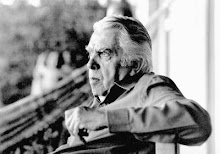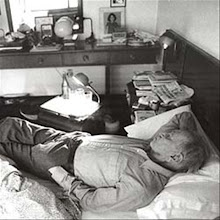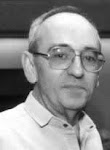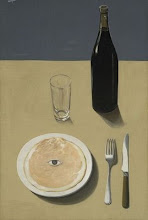A star is a kind of cosmic kitchen inside which atoms of hydrogen are cooked into heavier atoms. Stars condense from interstellar gas and dust, which are composed mostly of hydrogen. But the hydrogen was made in the Big Bang, the explosion that began the Cosmos. If you wish to make an apple pie from scratch, you must first invent the universe.
Fire is not made of chemical elements at all. It is a radiating plasma in which the high temperature has stripped some of the electrons from their nuclei.
The fact that atoms are composed of three kinds of elementary particles - protons, neutrons and electrons is a comparatively recent finding. The neutron was not discovered until 1932. Modern physics and chemistry have reduced the complexity of the sensible world to an astonishing simplicity: three units put together in various patterns make, essentially, everything.
The universe, all of it, almost everywhere, is 99 percent hydrogen and helium, the two simplest elements. Helium, in fact, was detected on the Sun before it was found on the Earth - hence its name (from Helios, one of the Greek sun gods).
In nature, such high temperatures and attendant high pressures are common only in the insides of the stars.
We have examined our Sun, the nearest star, in various wavelengths from radio waves to ordinary visible light to X-rays, all of which arise only from its outermost layers. It is not exactly a red-hot stone, as Anaxagoras thought, but rather a great ball of hydrogen and helium gas, glowing because of its high temperatures, in the same way that a poker glows when it is brought to red heat. Anaxagoras was at least partly right. Violent solar storms produce brilliant flares that disrupt radio communications on Earth; and immense arching plumes of hot gas, guided by the Sun’s magnetic field, the solar prominences, which dwarf the Earth. The sunspots, sometimes visible to the naked eye at sunset, are cooler regions of enhanced magnetic field strength.
Há 23 horasAll this incessant, roiling, turbulent activity is in the comparatively cool visible surface. We see only to temperatures of about 6,000 degrees. But the hidden interior of the Sun, where sunlight is being generated, is at 40 million degrees.
Thermonuclear reactions like those in a hydrogen bomb are powering the Sun in a contained and continuous explosion, converting some four hundred million tons (4 x 1014 grams) of hydrogen into helium every second. When we look up at night and view the stars, everything we see is shining because of distant nuclear fusion.
In the direction of the star Deneb, in the constellation of Cygnus, is na enormous glowing superbubble of extremely hot gas, probably produced by supernova explosions, the deaths of stars, near the center of the bubble. At the periphery, interstelar matter is compressed by the supernova shock wave, triggering new generations of cloud collapse and star formation. In this sense, stars have parents; and, as is sometimes also true for humans, a parent may die in the birth of the child.
Stars like the Sun are born in batches, in great compressed cloud complexes such as the Orion Nebula. Seen from the outside, such clouds seem dark and gloomy. But inside, they are brilliantly illuminated by the hot newborn stars. Later, the stars wander out of their nursery to seek their fortunes in the Milky Way, stellar adolescents still surrounded by tufts of glowing nebulosity, residues still gravitationally attached of their amniotic gas. The Pleiades are a nearby example.
As in the families of humans, the maturing stars journey far from home, and the siblings see little of each other. Somewhere in the Galaxy there are stars - perhaps dozens of them - that are the brothers and sisters of the Sun, formed from the same cloud complex, some 5 billion years ago. But we do not know which stars they are. They may, for all we know, be on the other side of the Milky Way.
All the elements of the Earth except hydrogen and some helium have been cooked by a kind of stellar alchemy billions of years ago in stars, some of which are today inconspicuous white dwarfs on the other side of the Milky Way Galaxy. The nitrogen in our DNA, the calcium in our teeth, the iron in our blood, the carbon in our apple pies were made in the interiors of collapsing stars. We are made of starstuff.


![[...]](https://blogger.googleusercontent.com/img/b/R29vZ2xl/AVvXsEjeNC2Kyxd34r2LuofHe9-vdXHeHwG3_2NhVmIOTlK2moU0Q4R7taMlS8iMmQgEl1-NdaRsPrLdREzfQZYKfUgjslwLZUZe67dAfFBREu-YRx6WGX-vAUt5eJT4_-lFwT4dGzGCQQ/s220/11798115_858304687558226_1857652538_n.jpg)














































